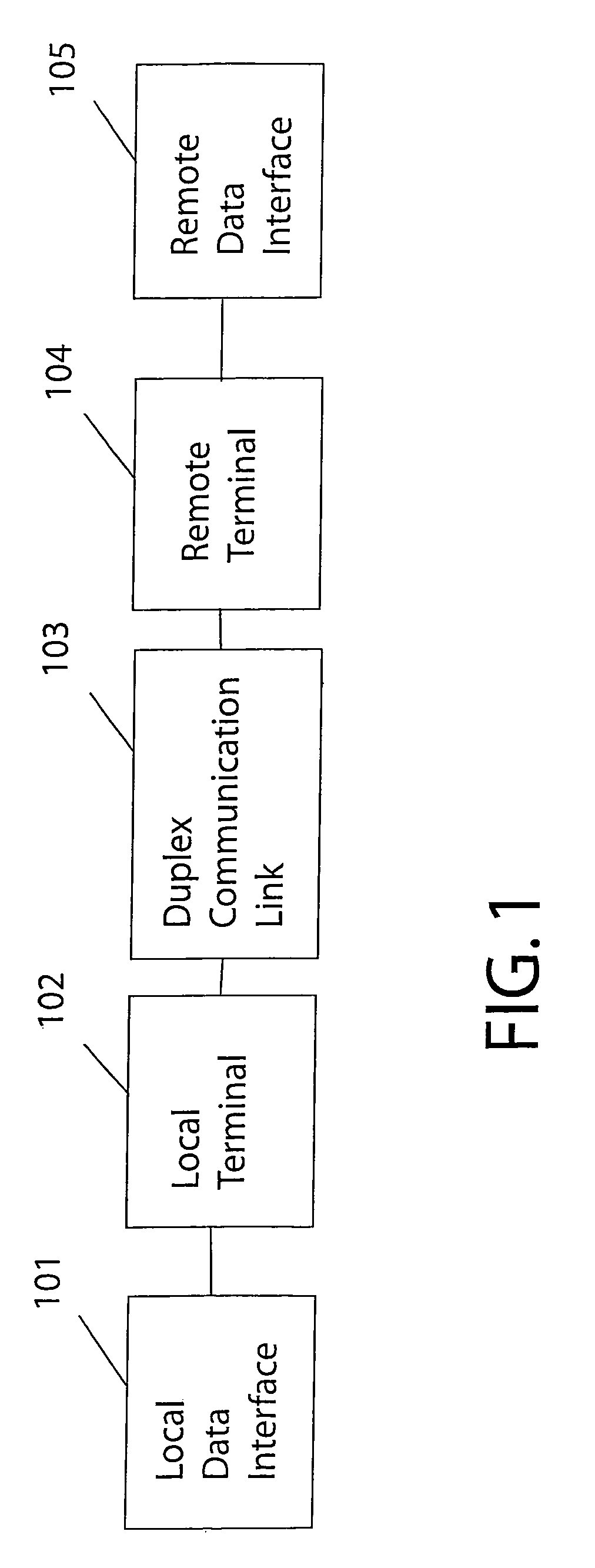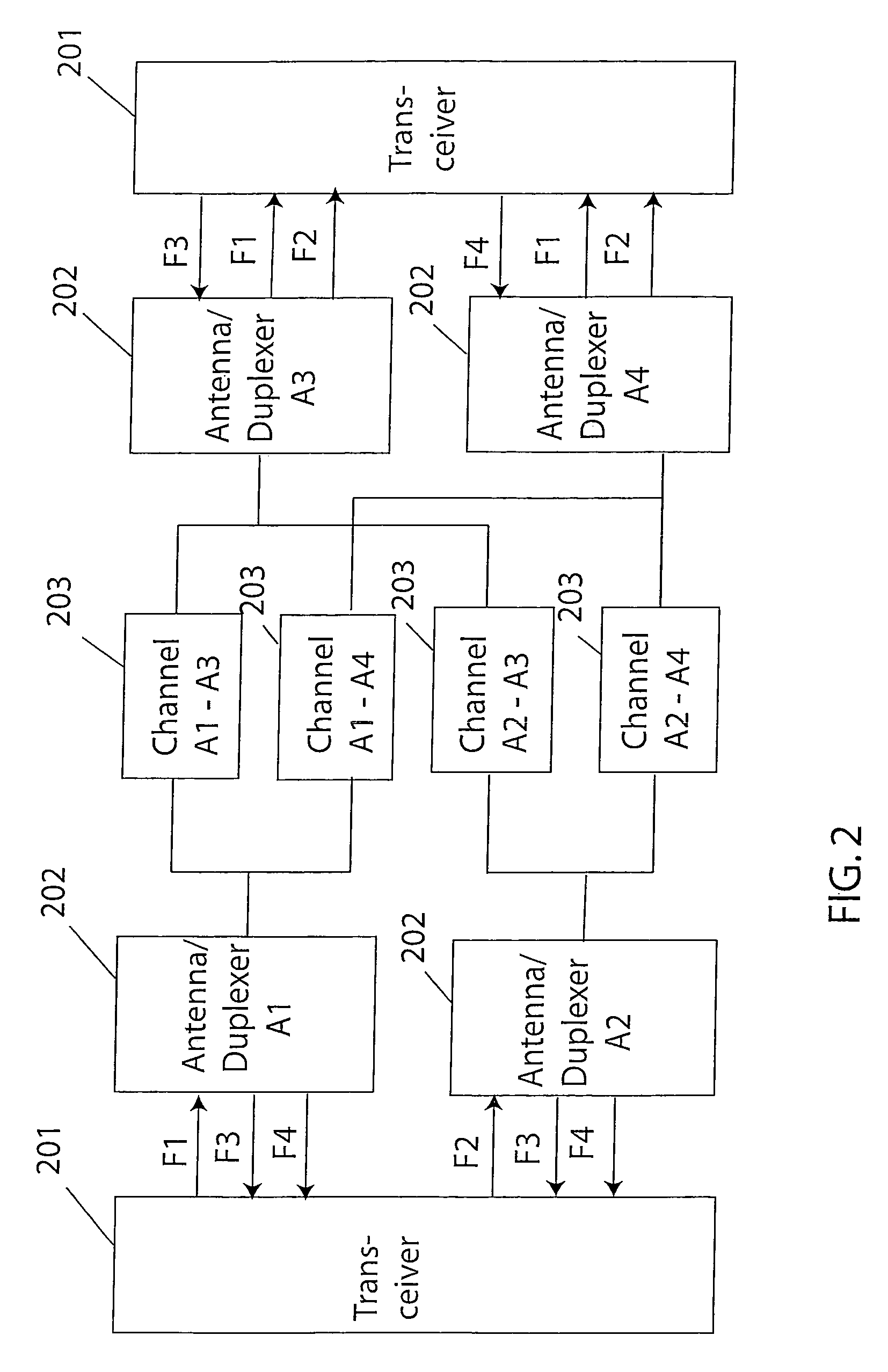Technique for adaptive data rate communication over fading dispersive channels
a data rate communication and channel technology, applied in data switching networks, instruments, frequency-division multiplexes, etc., can solve the problems of power limitation of the tropospheric scatter system, and achieve the effect of reducing mutual interference, increasing capacity, and increasing capacity
- Summary
- Abstract
- Description
- Claims
- Application Information
AI Technical Summary
Benefits of technology
Problems solved by technology
Method used
Image
Examples
Embodiment Construction
[0036]A digital communication link that provides information transfer in both directions, i.e. duplex communication, connects two link end points each with digital data information sources and collectors. In FIG. 1 a local data interface 101 is used at the local end point as the combination source and collector of digital data information. Typically local data interface 101 contains Internet Protocol (IP) traffic in the form of packets that came from or are going to servers that provide connection to the Internet. Local terminal 102 accepts digital data information from local data interface 101 for transmission over the duplex communication link 103 to a remote terminal 104 at the remote end point of communication link 103. Remote terminal 104 recovers the transmitted digital data information from received signals that include channel distortions and noise introduced in communication link 103. The recovered digital data information is transferred to remote data interface 105 where i...
PUM
 Login to View More
Login to View More Abstract
Description
Claims
Application Information
 Login to View More
Login to View More - R&D
- Intellectual Property
- Life Sciences
- Materials
- Tech Scout
- Unparalleled Data Quality
- Higher Quality Content
- 60% Fewer Hallucinations
Browse by: Latest US Patents, China's latest patents, Technical Efficacy Thesaurus, Application Domain, Technology Topic, Popular Technical Reports.
© 2025 PatSnap. All rights reserved.Legal|Privacy policy|Modern Slavery Act Transparency Statement|Sitemap|About US| Contact US: help@patsnap.com



